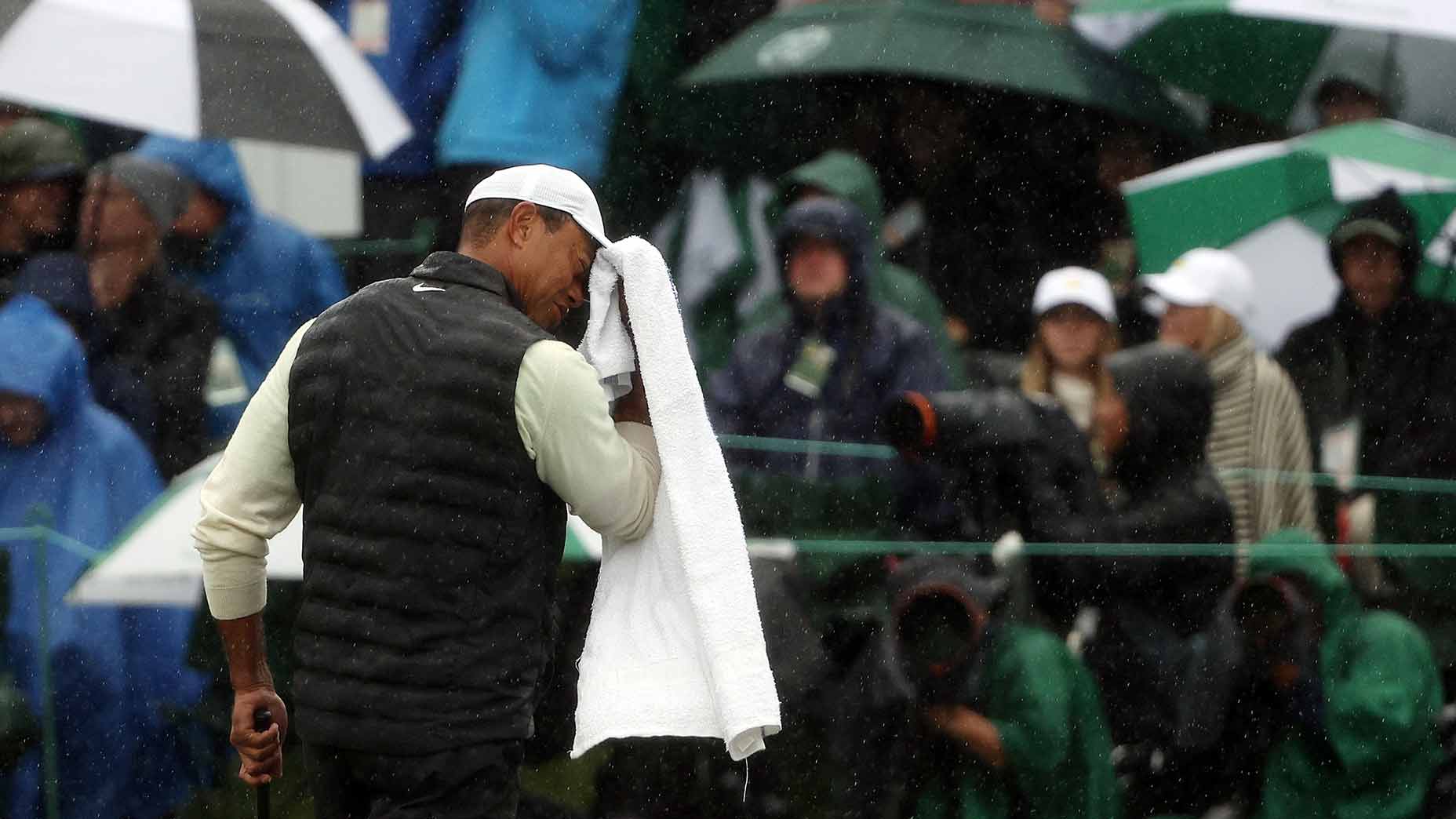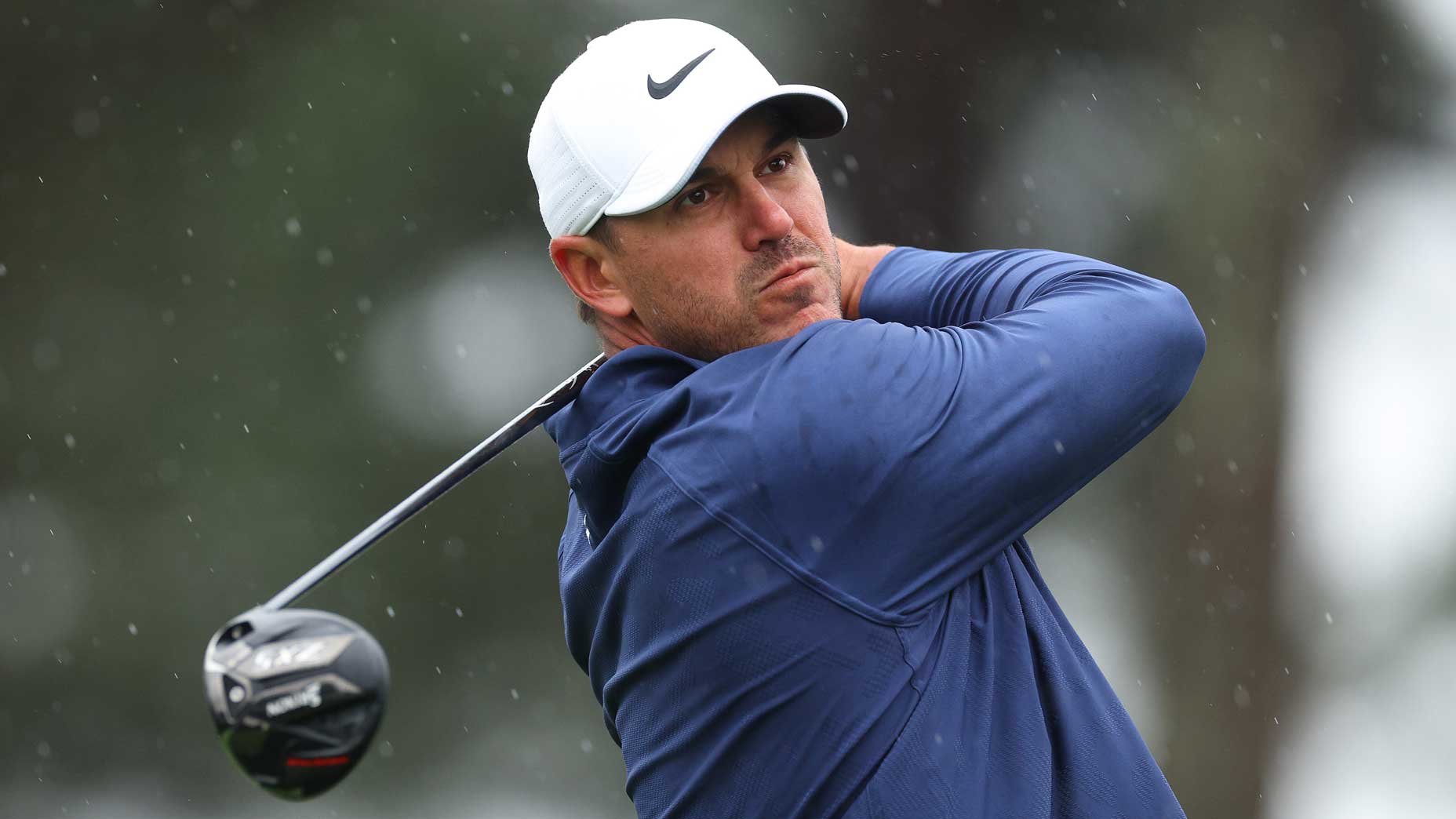There are few things that irk the all-powerful members of Augusta National more than breaking with tradition. It’s why there are no phones allowed on the grounds, why the food prices remain unchanged and why the second weekend in April every year is reserved for the Masters.
The 2023 tournament will put one of Augusta’s favorite traditions to the test.
Due to an increasingly unfavorable weather forecast, the Masters might have to consider finishing up the final round of play on a Monday — that means no twilight ceremony to place the green jacket on the new champion outside Butler Cabin.
Rain — and a couple of fallen trees — delayed the end of the second round until early Saturday morning. The third round only made it about 15 minutes into the TV broadcast before the horn was sounded and play was halted for the day.
The top two players on the leader board, Brooks Koepka (13 under) and Jon Rahm (9 under), had only made it through six holes at that point.
So with nearly half of the third round still to play, plus another 18 holes in the final round, a Sunday finish is getting dicey. The Masters have completed 36 holes in one day on four occasions, but the last instance was in 2003. A lot has changed since then — especially when it comes to broadcast rights.
Which brings us back to the dreaded Monday finish. It’s only happened five times in the history of the tournament. Could this year’s Masters become the sixth?
Horton Smith won his second Masters title on a marathon Monday in 1936.
Yes, one of the only times the Masters completed 36 holes on one day was also one of the only times the Masters has completed play on a Monday. That didn’t seem to bother Smith at all. He shot 68-72 in two rounds that Monday to claim the green jacket by one stroke at 3-under par.
Horton Smith is shown wielding a driver during the inaugural Masters Tournament, March 25, 1934. (AP Photo)
Henry Picard won two majors in consecutive years starting with the Masters in 1938. Two years after Smith’s wild Monday victory, Picard carded 71-72-72-70 = 285 to win by two strokes at 3-under-par.
Bad weather caused the Augusta National to scrap plans the usual schedule and instead hosted the first round on Saturday, the second and third rounds on Sunday and the final on Monday.
Picard went on to win the PGA Championship the following year.

Byron Nelson, Jimmy Demaret, Henry Picard, Horton Smith, Ben Hogan, Craig Wood, Claude Harmon, Gene Sarazen, and Sam Snead pose at the Champions Clinic during the 1953 Masters Tournament at Augusta National Golf Club in April 1953 in Augusta, Georgia. (Photo by Augusta National/Getty Images)
It’s hard to imagine a situation like the 1961 Masters ever playing out again. The rain on Sunday became so intense that the tournament hosts decided to end play before 4 p.m., erase the entire final round from the record books and replay the last 18 holes on Monday instead.
Gary Player was 2-under-par through nine holes when play was called. He came back on Monday and went 2-under on the front nine again before playing the back nine at 3-over. Luckily it didn’t impact his lead.
Player won his first of three green jackets and helped turn the Masters into the massive spectacle it is today.

Honorary starter Gary Player reacts after teeing off during the first round of The Masters golf tournament. Mandatory Credit: Rob Schumacher-USA TODAY Network
And so began the Curse of the 3s at Augusta National.
After escaping any further delays for a decade, the rain once again forced the Masters to complete play on Monday. That helped Tommy Aaron secure the only major victory of his career with a final round of 68 fending off C.J. Snead — the nephew of Golf Hall of Famer Sam Snead — by one stroke.

Tommy Aaron at the 1973 Masters in Augusta, Georgia. (Photo: Associated Press)
Seve Ballesteros won his second Masters title on a Monday in 1983 after heavy rain on Friday pushed the tournament schedule back.
It clearly didn’t impact Ballesteros’ game at all. He shot 68-70-73-69 = 280 to win by four strokes at 8-under-par.

Seve Ballesteros receives the green jacket from Craig Stadler after the 1983 Masters Tournament. (Brian Morgan/Popperfoto/Getty Images)









